Lemon Ricotta Custard Cake is an easy to make, single-layer bake with a soft, creamy center and light lemon flavour. It’s a great change from traditional sponge cakes, with no mixer or frosting needed, and it’s delicious served warm or cold.
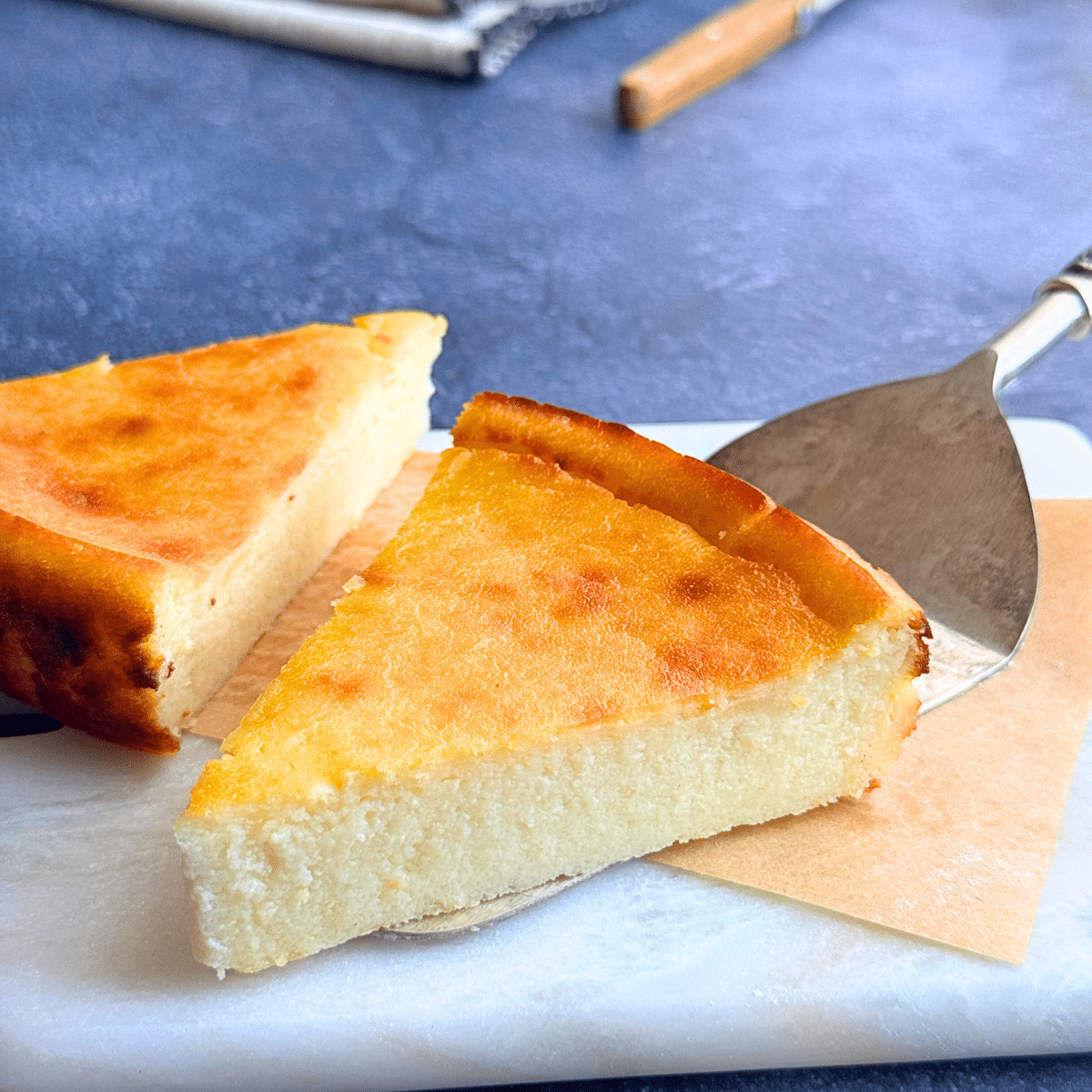
What to expect
- Soft and creamy texture, like a baked custard, not a sponge cake
- Slices cleanly once cooled, no crumbs or crumbling
- Slightly firmer edges with a tender center
- Light fresh lemon flavor, not overpowering
Ingredients you'll need
Here’s the simple list of ingredients you’ll need to make this recipe. Scroll down to the recipe card below for exact measurements
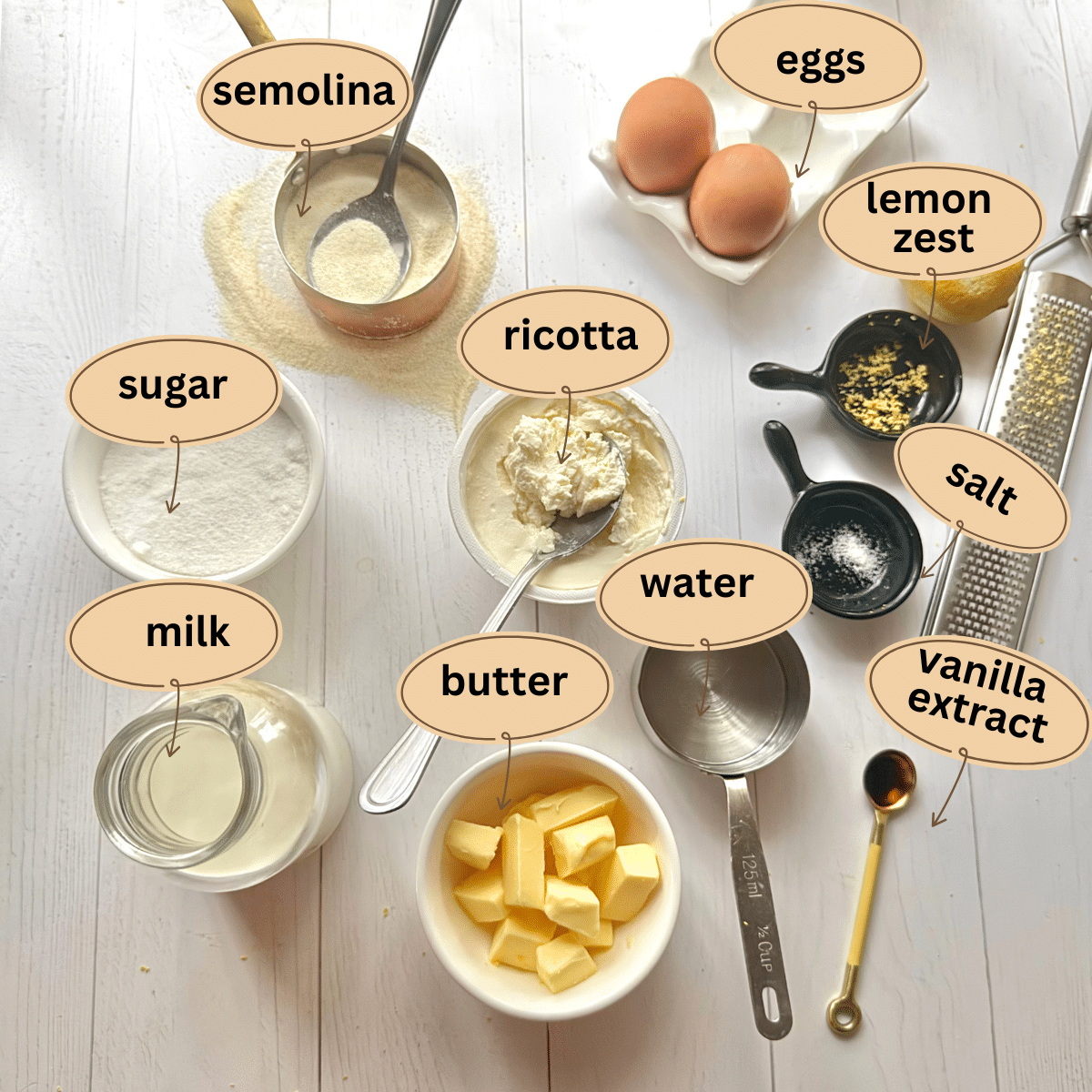
- Milk – Whole milk gives the best texture. Avoid low-fat or skim.
- Water
- Unsalted butter
- Semolina: Use fine semolina for a soft, custard-like texture.
Semolina flour works too, but the cake will be softer and more pudding-like.
Avoid coarse semolina, it stays gritty and makes the cake grainy. - White granulated sugar: Reduce slightly if you prefer less sweetness.
- 1 cup (250 g) whole milk ricotta: Use full-fat. Drain if watery. Cottage cheese isn’t recommended.
- Eggs: Help the cake set and give richness.
- Zest of 1 lemon
- vanilla extract
- ½ teaspoon salt (¼ teaspoon if using salted butter)
Visual Instructions
These visual instructions help you see the process. You can also find the full printable recipe with instructions and ingredients at the end of the post.
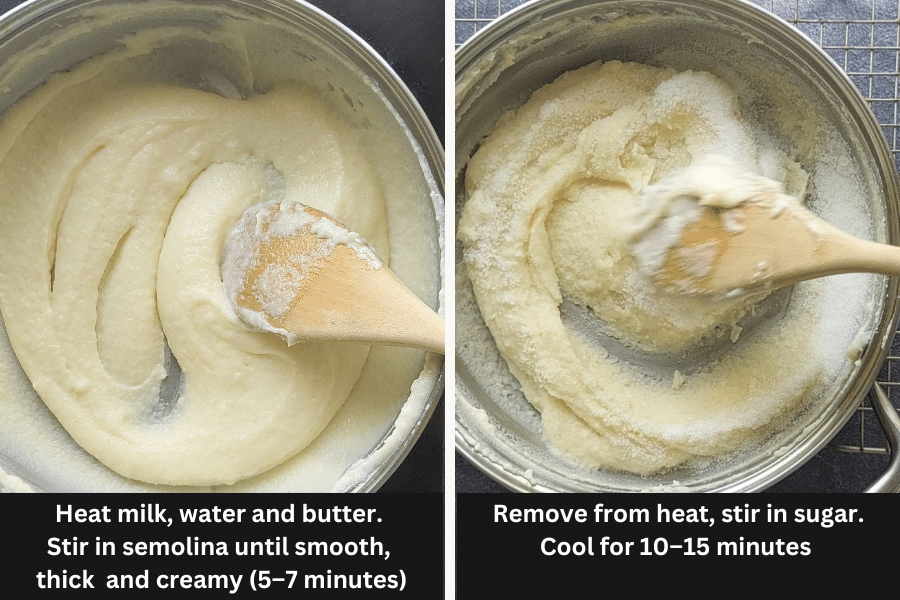
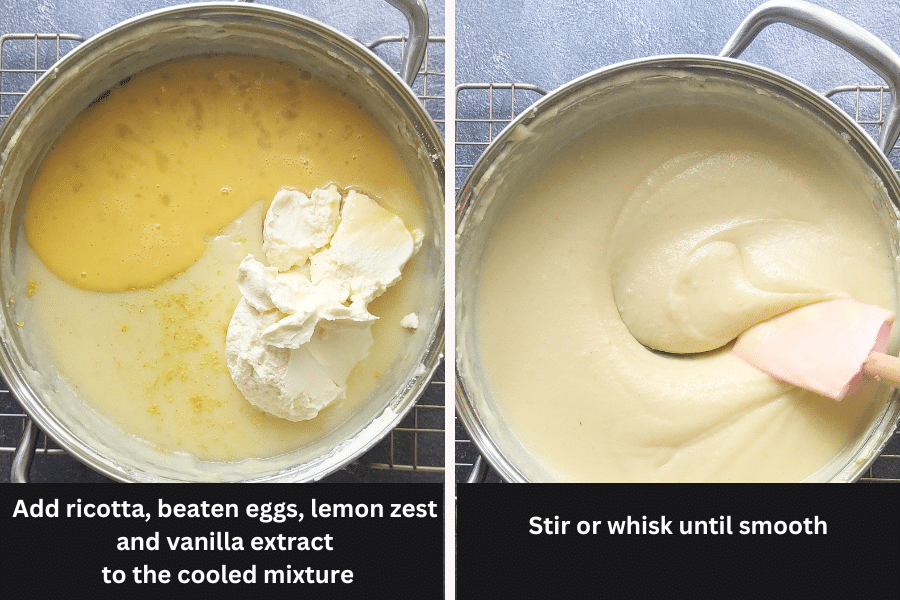
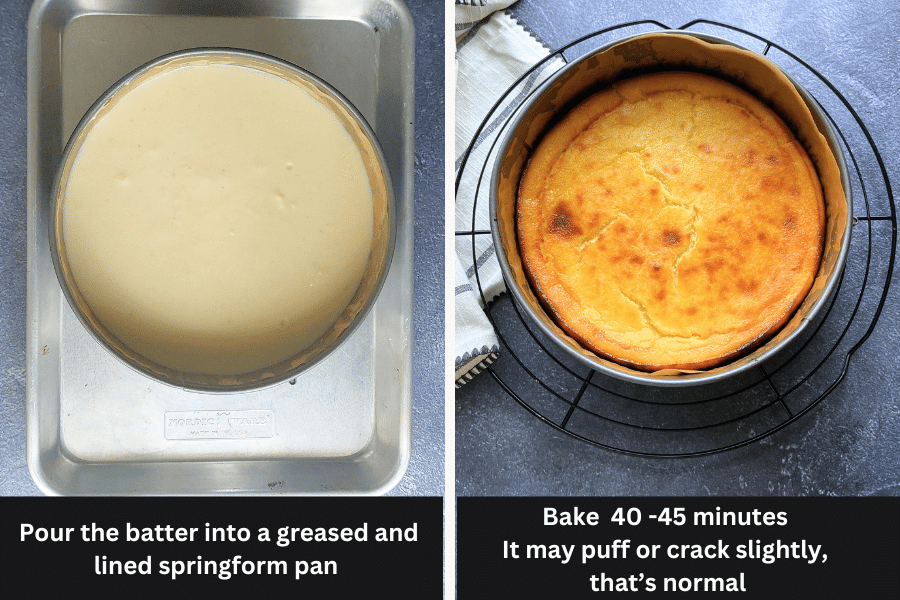
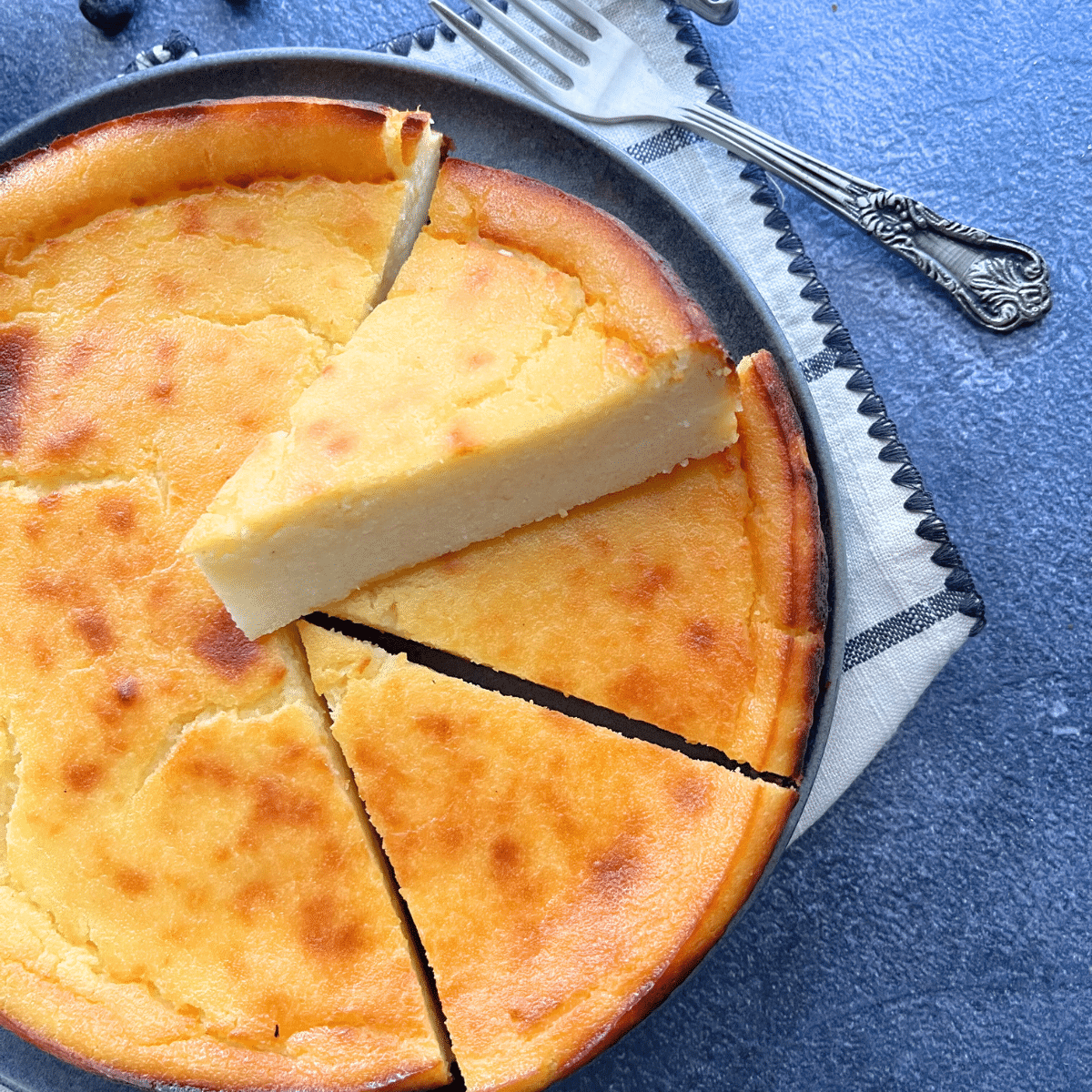
Let the cake cool in the pan for at least 1 hour. For clean, neater slices, chill before serving.
Storage
- Store the cake covered in the fridge for up to 4 days.
- It slices best once chilled keeping its shape perfectly
- Serve cold or bring to room temperature before serving, both are absolutely delicious.
Tips
- Its best to use fine semolina in this recipe as it gives the best smooth, creamy texture.
- After cooking the semolina, let it cool for at before adding the eggs. This prevents curdling and keeps the mixture silky.
- Bake until the center is just set with a slight wobble. It will firm up as it cools.
- Let it rest in the pan for at least an hour. I like to chill it before serving, it slices so neatly that way.
- And don’t worry about cracks on top they’re normal, and part of this cake’s beauty.
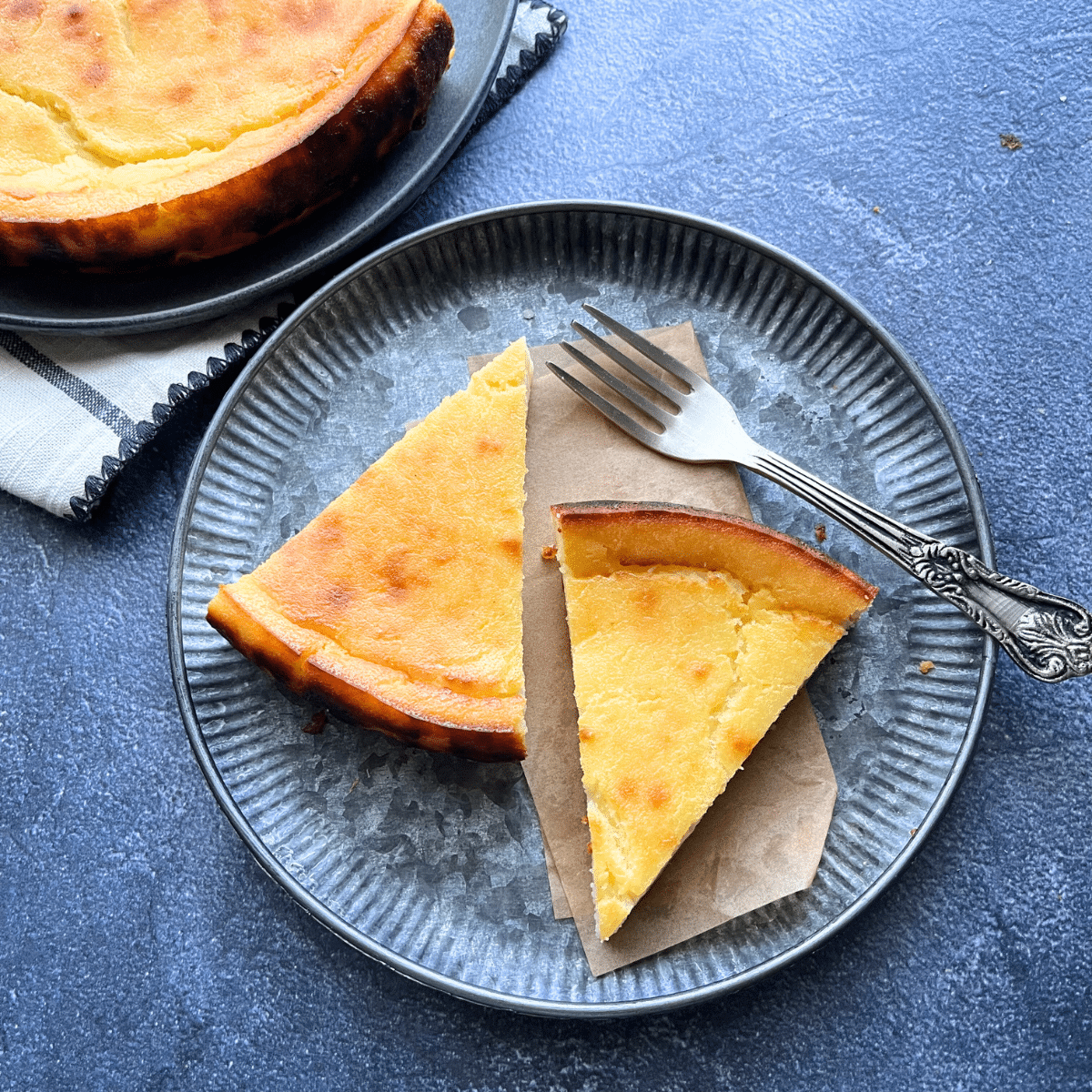
What pan works best
I usually use a springform pan because the cake has a soft, custard-like texture, and it’s much easier to release the sides without flipping the cake out.
- But if you don’t have one, a square pan lined with parchment paper (baking paper) and a bit of overhang works just as well.
- Once it’s fully cooled, or even chilled you can lift it out and cut it into neat squares. It’s a bit less traditional, but just as lovely, and perfect for serving small bites.
Tip: If you're going this route, make sure the overhang is enough to lift the cake out easily, and wait until it's completely cooled (or cold) for clean cuts.
Why not flip it like a sponge cake?
Because this cake has a soft, custard-like center, flipping it upside down can cause it to crack, collapse, or stick to the pan, especially while it’s still warm.
- It’s not a dry or crumbly cake, so it doesn’t hold together in the same way.
- 1 cup (240 ml) whole milk (full-fat)
- ½ cup (120 ml) water (tap water is fine)
- 3 tablespoons (45 g) unsalted butter
- ½ teaspoon salt (use ¼ teaspoon if using salted butter)
- ½ cup (90 g) fine semolina (see note 1)
- ¾ cup (150 g) white granulated sugar
- 1 cup (250 g) whole milk ricotta cheese (drain if watery) (cottage cheese isn’t recommended)
- 2 large eggs (lightly beaten)
- Zest of 1 lemon
- 1 teaspoon vanilla extract
Preheat the oven
- Preheat to 175°C (350°F) conventional, or 160°C (320°F) fan.
- Grease and line an 8-inch (20 cm) springform pan or square pan with baking paper. (See Notes 2 and 3)
Cook the semolina
- In a medium saucepan, combine the milk, water, butter, and salt.
- Bring to a gentle simmer over medium heat. Slowly whisk in the semolina, stirring constantly to avoid lumps.
- Cook for 5 to 7 minutes, stirring often, until the mixture thickens into a smooth, spoonable consistency (like pudding before it sets).
Cool slightly and add sugar
- Stir in the sugar, it will soften the mixture and make it look a bit more liquid again. Don’t worry, that’s exactly how it should be.
- Let it cool for 10 to 15 minutes, until just warm. (See Note 4)
Add ricotta and eggs
- Add the ricotta, beaten eggs, and vanilla extract to the cooled semolina mixture. Whisk until smooth and fully combined.
Bake the cake
- Pour the batter into the prepared pan and smooth the top.
- Bake for 40 to 45 minutes, or until just set, the center should have a gentle wobble when the pan is shaken.
- It will firm up as it cools. Cracks on top are normal.
Cool and serve
- Let the cake cool in the pan for at least 1 hour. For clean, neater slices, chill before serving.
Serving and Storage
- Slices best when chilled
- Serve cold or at room temperature
- Store covered in the fridge for up to 4 days
Avoid coarse semolina, it stays gritty and makes the cake grainy.
2. What pan works best: A springform pan makes releasing the cake easier because it’s soft and custard-like.
- No springform? A square pan lined with baking paper and a bit of overhang works just as well.
- Once cooled or chilled, you can lift it out and slice neatly into squares.
3. Why not flip it? Flipping can cause cracks or collapse. This cake is too soft when warm to flip like a sponge — it’s better to release or lift gently.
4. Let it cool slightly before adding eggs: This prevents curdling and keeps the mixture smooth and silky.
See more recipe tips and visual instructions in post above
Hungry for more?
Sign up for my free newsletter to get emails about new recipes .And don't forget to follow me on YouTube, Facebook, Pinterest, and Instagram for all the latest deliciousness

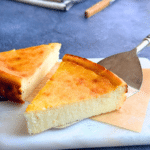




Leave a Reply